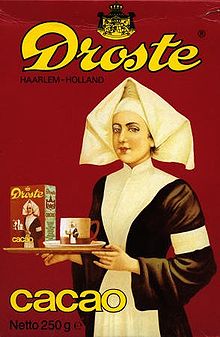Recursion
Objectives
- Define recursion
- Identify the two parts of a recursive function:
- Write base case
- Write recursive case
- Write a recursive function
- See classic recursion problems
- Write your own recursive functions
Joke Dictionary Definition
Recursion: see definition of recursion
What is it?
Today we're going to explore a topic called recursion. According to Wikipedia recursion is "the process of repeating items in a self-similar way." In programming recursion basically means, "a function that calls itself."
Here's some pictures that we could say are recursive and exhibit properties of recursion:



Let's Pretend We Are Each A Recursive Function
How can we count how many people are sitting directly behind one person in this classroom?
The teacher stands at the front of the room and asks someone how many people are behind them. That person can do two things:
- they can say there's no one sitting behind them
- they can ask the person behind and add one to their answer
Now let's try it. Don't turn around and look at who all is behind you! You can only communicate with the person who asked you the question, and the person directly behind you.
This is an example of recursive programming. We could write our instructions
as a function called count that calls itself:
function count(person) {
var otherPerson = person.getPersonBehindMe();
if (otherPerson === "no one") {
return 0;
} else {
return 1 + count(otherPerson);
}
}
Recursion allows us to write extremely expressive code! We can write a very small amount of code and have it perform extremely powerful computations.
A Useless Recursive Function
We know that functions can call other functions. It's not so obvious that functions can actually call themselves too. Let's look at one function that calls itself and consider what it does.
- What will be the output of this function?
- When will this program stop running?
// define the function
function navelGazer() {
console.log("hmm...");
// make a recursive call to the function
navelGazer();
}
// call the function
navelGazer();
This function will theoretically print out "hmm..." forever. It will never stop running. It will keep calling itself forever and ever.
In practice, the function will eventually crash. Your computer will run out of memory and you'll see an error message saying something like, "stack overflow exception" or "maximum call stack exceeded."
This function is only here to prove that it's possible to call a function from inside itself, and to show the danger of a function that calls itself forver.
Recursion gets much better than this useless example. It's possible to write recursive functions in such a way that we can write very robust, expressive code.
Let's look at more recursive functions and see what techniques we can use to make sure our programs do useful things and don't simply call themselves forever.
Base Cases and Recursive Cases
Recursive functions are comprised of the following components:
- the base case, and
- the recursive case.
Recursive functions usually follow this pattern. They detect and handle the base case first, otherwise they perform one small piece of the problem and then recurse:
function recurse(n) {
// check for base case
if (n <= 0) {
return 0;
} else {
// otherwise do a small amount of work and call the function again
return 1 + recurse(n - 1);
}
}
Base Cases
The base case is the simple case. It's the case when the algorithm doesn't call itself. These cases are often deceivingly simple! Think of them as writing what the program should return for the most obvious of examples.
If you're writing a function that computes the sum of numbers in a list the base case is probably:
if (list.length === 0) {
return 0;
}
Writing one or more base cases that define the answer for the simplest part of the problem will prevent your program from calling itself indefinitely.
Recursive Cases
The recursive case is the case when the function performs one small part of the problem and calls itslf recursively to solve the next small part of the problem.
How would someone describe the base case of the people counting problem? Can someone else describe the recursive case of the people counting problem?
Sum Problem Practice
Let's write a function called sum that accepts a number N and computes the
sum of numbers from 0 to N.
What is the base case?
if (n < 0) {
return 0;
}
What is the recursive case?
if (n > 0) {
// man, I wish we had a function that computed the sum of 0..N-1
return n + ???
}
Oh wait!! We've already defined a function that sums all numbers! Take a step and take the leap of faith. Call the function again!
function sum(n) {
if (n < 0) {
return 0;
} else {
n + sum(n - 1);
}
}
Wait, this doesn't work. Remember to return the value that comes back
from the recursive call.
function sum(n) {
if (n < 0) {
return 0;
} else {
return n + sum(n - 1);
}
}
Palindrome Practice Problem
Detecting whether a string is a palindrome is an excellent example of a problem that turns out to be extremely elegant when written recursively.
What is a palindrome? A palindrome is a string that is spelled the same backwards and forwards.
Put another way, a palindrom is a string where the first letter is equal to the last letter, and the second letter is equal to the second to last letter and so on and so forth. An empty string is considered a palindrom. A one letter string is considered a palindrome.
Write a function called isPalindrome that accepts a string and returns true
if the string is a palindrome, and returns false if the string is not.
What are our base case(s)?
- Return true if the string is empty.
- Return true if the string is of length 1
What is our recursive case?
- compare the first and last letter:
- if they are equal then recurse on the remaining parts of the string
- if they are different then return false
Remember your return statements! The final solution should bubble up from the deeper recursive calls!
isPalindrome("") // true isPalindrome("a") // true isPalindrome("ab") // false isPalindrome("abba") // true isPalindrome("catdog") // false isPalindrome("tacocat") // true
function isPalindrome(ss) {
if (ss.length < 2) {
return true;
} else {
// get the first and last letters
var first = ss[0];
var last = ss[ss.length - 1];
// compare the first and last letters.
if (first !== last) {
return false;
} else {
// get the middle of the string
var middle = ss.substr(1, ss.length - 2);
return isPalindrome(middle);
}
}
}
Practice Problems
Fibonacci
Write a recursive function called fib that accepts a number N greater
than zero and returns the Nth fibonacci number:
fib(-1) // 0
fib(0) // 0
fib(1) // 1
fib(2) // 1
fib(3) // 2
fib(4) // 3
fib(5) // 5
fib(6) // 8
fib(7) // 13
Reverse String
Write a recursive function called reverse that accepts a string and returns
a reversed string.
reverse("") // ""
reverse("a") // "a"
reverse("ab") // "ba"
reverse("computer") "retupmoc"
reverse("abcdefghijklmnopqrstuvwxyz") // "zyxwvutsrqponmlkjihgfedcba"
reverse(reverse("computer")) // "computer"
Is reverse(reverse("computer")) considered recursive? Why or why not?
Pretty Print
Write a function called prettyPrint that accepts a complex object and prints out
all of it's properties and all of its values. The object can have objects nested
inside of it.
Make the function accept two parameters: prettyPrint(oo, indent).
oo is the object that's currently being iterated over.
indent is a string representing the current level of indentation.
Here's a piece of code that will allow you to call prettyPrint without
having to pass in an empty string each time you indent:
function prettyPrint(oo, indent) {
indent = indent || "";
// write your solution here
}
Whenever you make a recursive call increase the level of indentation by adding two spaces to indent:
function prettyPrint(oo, indent) {
// ...
prettyPrint(newOO, indent + ' ');
// ...
}
It's useful to know how to detect actual key/value objects in JavaScript:
typeof [] // "object"
typeof {} // "object"
[].constructor == Array // true
[].constructor == Object // false
({}).constructor == Object // true
Expected Output:
o1 = {a: 1, b: 2};
o2 = {a: 1, b: 2, c: {name: "Bruce Wayne", occupation: "Hero"}, d: 4};
o3 = {a: 1, b: 2, c: {name: "Bruce Wayne", occupation: "Hero", friends: {spiderman: {name: "Peter Parker"}, superman: {name: "Clark Kent"}}}, d: 4};
prettyPrint(o1, "")
a: 1
b: 2
prettyPrint(o1, "")
a: 1
b: 2
c:
name: Bruce Wayne
occupation: Hero
d: 4
prettyPrint(o3, "")
a: 1
b: 2
c:
name: Bruce Wayne
occupation: Hero
friends:
spiderman:
name: Peter Parker
superman:
name: Clark Kent
d: 4
Reverse String Solution
function reverse(ss) {
if (ss.length == 0) {
return "";
} else if (ss.length == 1) {
return ss;
} else {
var last = ss[ss.length - 1];
var beginning = ss.substr(0, ss.length - 1);
return last + reverse(beginning);
}
}
Fibonacci Solution
function fib(n) {
if (n <= 0) {
return 0;
} else if (n == 1) {
return 1;
} else if (n == 2) {
return 1;
} else if (n > 2) {
return fib(n - 1) + fib(n - 2);
}
}
Pretty Print Solution
function prettyPrint(oo, indent) {
indent = indent || "";
for (var key in oo) {
var value = oo[key];
// if the value at the key is complex then recurse
if (value.constructor === Object) {
console.log(indent + key + ":");
prettyPrint(value, indent + " ");
} else {
// otherwise, do the simple base case and just print it out.
console.log(indent + key + ":", value);
}
}
}